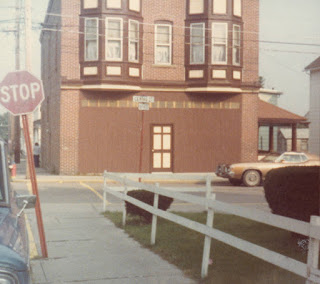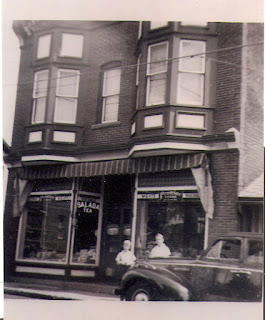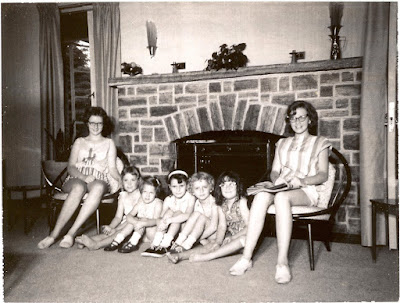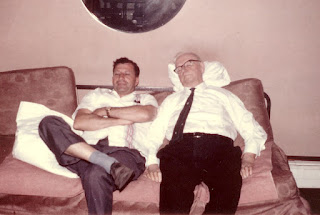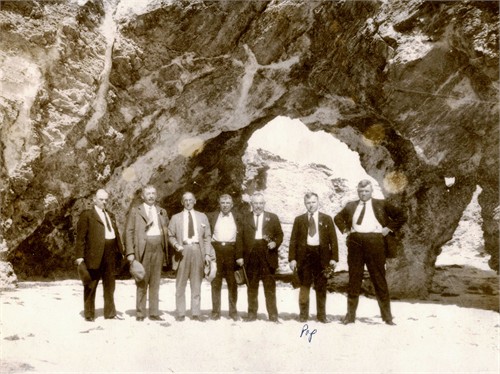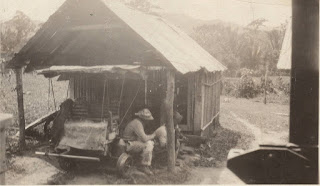 |
| A page from one of my many scrapbooks. |
I am one who does not like to spend much time in the kitchen if I can help it. I love to eat, but would much rather enjoy someone else’s concoction. About ten years ago (2005), I found an envelope filled with my maternal grandmother’s recipes that she copied by hand. Mary Sarna GABUZDA loved to cook. Her husband, Steven Andrew GABUZDA, was a butcher, in the small town of Freeland, Luzerne, Pennsylvania. The Gabuzda Meat Market was located at 899 Centre St. (corner of Centre & Chestnut) right across the street from St. Anne’s Catholic Church.
 |
| Mary Gabuzda with her daughters 1986 |
I came up with the idea of putting together a cook book of family recipes and started earnestly on it; but, as we know other circumstances can interfere. To my delight, another cousin had the same, yet “different” idea. She contacted our aunts, her four daughters, for family recipes, to include with our grandmother’s recipes.
On the first page of her family recipe book she states my identical intentions, feelings and memories. Thank you, Maureen.
“This recipe book is for my mom, Marion Denion and my aunts, Irene O’Donnell, Martha Cooper and Beezie Clapper and for all the Gabuzda offspring. When I think of my mom and her sisters, I think of women who love to laugh, especially at themselves. I’ve always enjoyed listening in on their conversations...
“In my memory, my grandmother is always in the kitchen preparing food. We spent many Easters, Thanksgivings and summer time visits with her in Freeland, Pennsylvania. At the end of these visits, she lade us with food for our trip home...
“In her later years she loved to collect recipes from many sources - her daughters, magazines, her neighbor, Anna Stunz, and the radio... She would sit in her kitchen listening to “Alice” read recipes on the radio. She would copy them down until she heard an ingredient she didn’t like, then she would scratch out the recipe and turn off the radio. She also got recipes from magazines she read at the hairdresser. She wouldn’t tear them out, but would memorize them and write them down when she got home. Wow! While these are the recipes of the Gabuzda sisters, it is obvious their mother is the
main contributor.
Maureen Gray
September 2005”
I am so thankful my cousin, Maureen, caught the cooking gift from my grandmother and collected our family recipes. We are both into scrapbooking and quilting.
Check out Maureen’s blogs. One on quilting and the other on the farm life.
Glen Almus Farm - http://glenalmusfarm.com/wp/
I will post some of grandma’s recipes from the “old country” and even the “newer ones” she picked up that her grandchildren and great-grandchildren still enjoy today. Here are two for a start. See above. Enjoy!
I visited east coast families during the summer of 2012. Maureen and I share our current projects.


